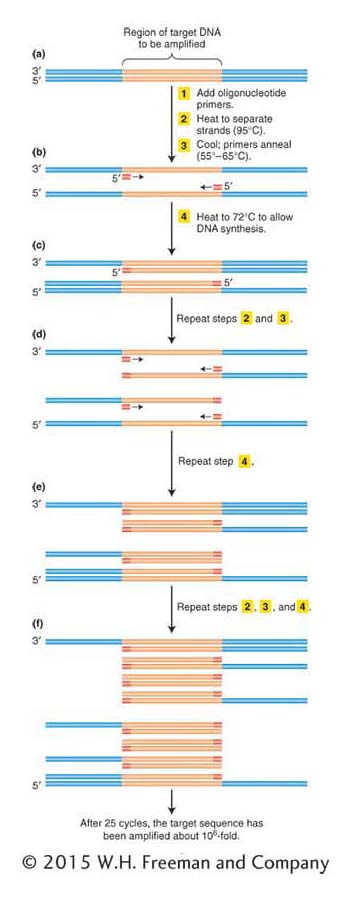
The polymerase chain reaction quickly copies a target DNA sequence. (a) Double- r- r- r- r- e-
ANIMATED ART: Polymerase chain reaction